If you click on a link and make a purchase we may receive a small commission. Read our editorial policy.
Sleepy Hollow reimagined as a supernatural queer romance by Lumberjanes co-creator
Shannon Watters and Branden Boyer-White discuss the supernatural in celebration of the OGN Hollow

Return to the storied town of Sleepy Hollow in a new supernatural queer romance called Hollow from BOOM! Studios' BOOM! Box imprint.
Shannon Watters, co-creator of the groundbreaking original series Lumberjanes, and co-writer and debut graphic novel author Branden Boyer-White, along with artist Berenice Nelle, and colorists Kaitlyn Musto, Kieran Quigley, and Gonçalo Lopes created Hollow - a new OGNstarring the descendants of the original legend and, of course, the town's notorious spooky haunt, the Headless Horseman. The OGN is an inspired retelling of Washington Irving's 1820 story, 'The Legend of Sleepy Hollow,' which is set in the present day and is queer AF. No matter your age, Hollow is the perfect story for the Halloween season.

Popverse sat down with Watters and Boyer-White, who are not only writing partners but partners in life as well, to chat about their new graphic novel, Hollow. We discussed the impetus for the book, how they developed their present-day version of the legend of the Headless Horseman, and the story behind Vicky Van Tassel's (yes, that Van Tassel) ever-changing style. We also discuss ghosts, supernatural encounters, and more!
[This interview has been edited for clarity and length. Watters and Boyer-White often finish each other's sandwiches, so it was easier to treat some answers as a joint response.]
Popverse: What was the research process for retelling Washington Irving's 'The Legend of Sleepy Hollow' from 1820? Have you been to Sleepy Hollow?
Branden Boyer-White: We got the idea for the book on a trip to Sleepy Hollow. I have always loved the Headless Horseman legend, and Shannon knew this. We'd been dating for a few years, and she took me on a surprise trip to Sleepy Hollow in October 2019. The town is super into it, and it's so much fun while you're there. Obviously, it's a huge tourism draw for them, and they've thrown their arms around it, but there's also a lot of authentic pride and love that this famous American author loved the town and chose to set a story there.
Sleepy Hollow's got that very East Coast, deeply historical vibe. We did all the tourist stuff: we toured the famous graveyard, walked the Headless Horseman Bridge, and went to the Historical Society's performance of the legend, like that sort of thing. The Headless Horseman is on everything, which was the impetus [for the book], and we thought it was so cool that this is the town's pride.
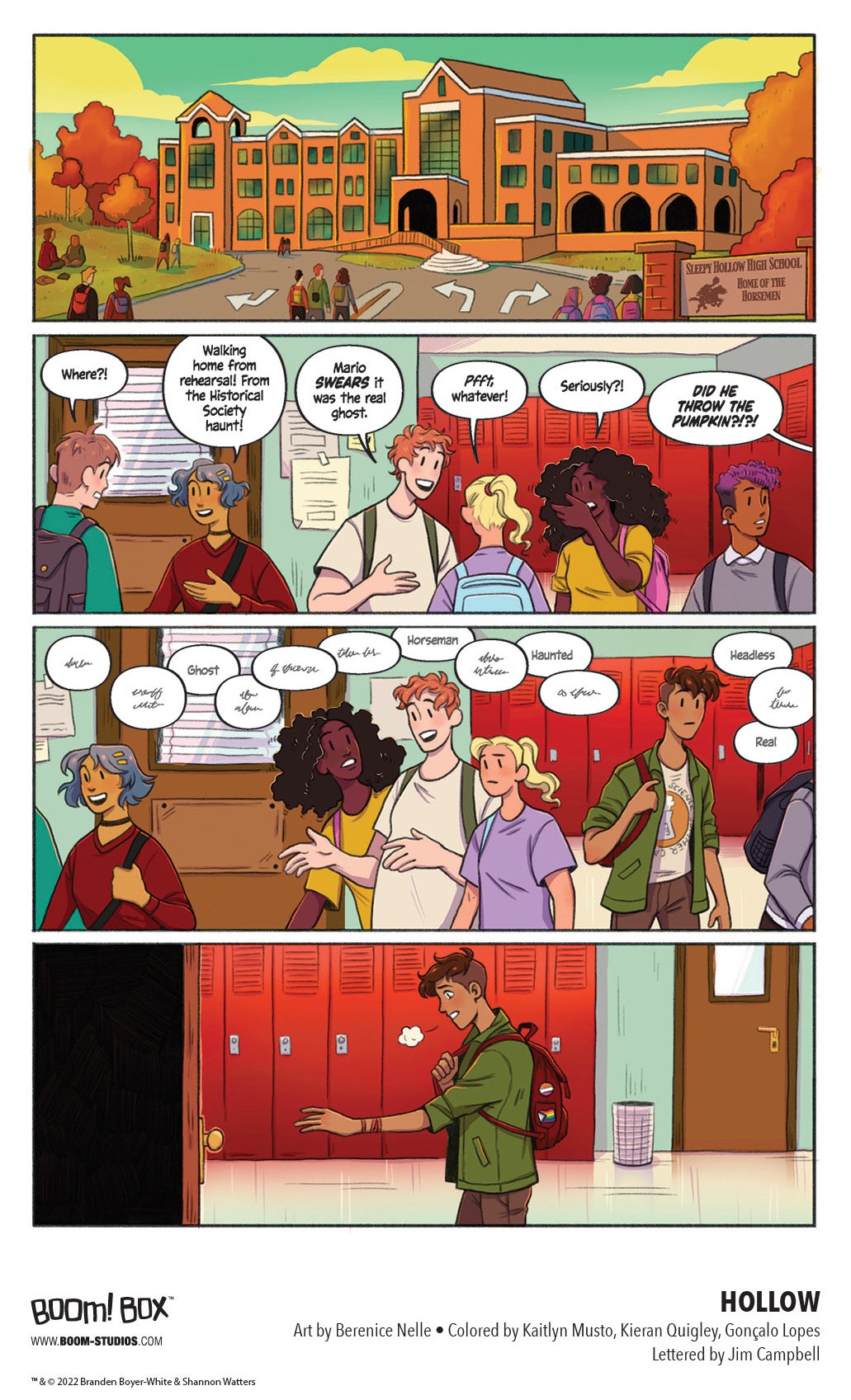
On our last night, we were at dinner and started spitballing, like, 'What if contemporary teenagers came across the Headless Horseman ghost? What if they encountered him? What would that be like? What would happen next?' Then, Shannon said, "I can picture a grumpy, cynical teen who's not into it. What if they had to move here and deal with this? What if they encounter the legend? What if they're the one the ghost sneaks up on?" And so, that's how the idea for the book was born.
Thus, we had inadvertently done some research for the book before we decided it would be a thing because we had run around the town, gone on all the tours, and taken photos. We could incorporate the stuff we had seen and learned into the writing of the book, like we had reference photos to send our artist. The other part of the research is reading the original story and watching and reading the different incarnations of it through the ages. Shockingly, Shannon had never seen the Tim Burton version of Sleepy Hollow, and I was like, "If we're going to write this book, we have to watch it."
Shannon Watters: It was great. I loved it.
Have you seen the cartoon?
Boyer-White: Oh, a million times; Bing Crosby's narrated Disney cartoon was my first exposure to it. I mean, hers, too, as kids. It is such a great adaptation.
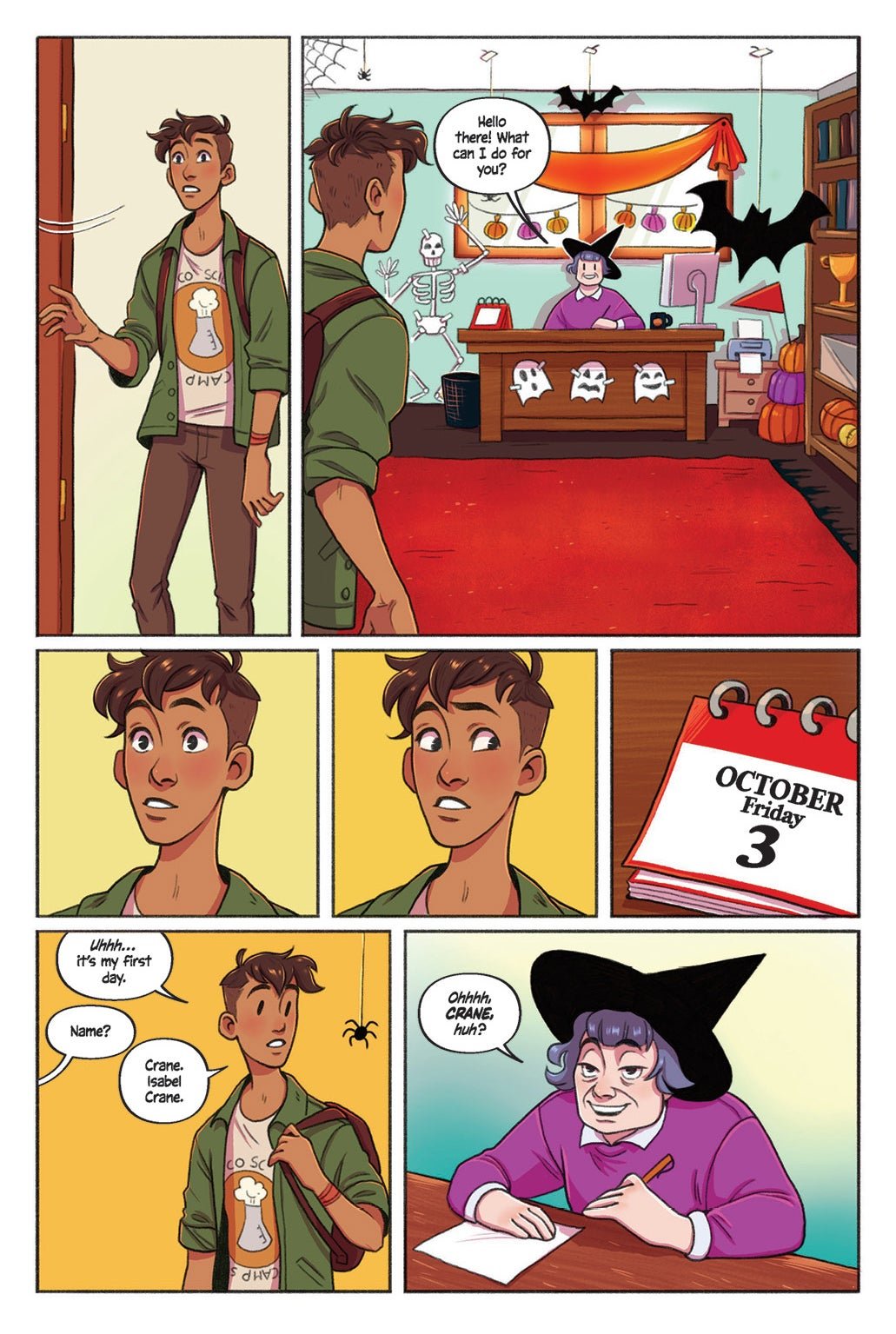
How did the actual town of Sleepy Hollow play into your creative process?
Together: We took it very seriously, placing it in the reality of the town as much as possible—obviously, it is kind of a magical, sweet, fictional teen version of the town. We make up a bunch of it in terms of physical locations and stuff, but people still live there, love it, and take pride in it. So we were like, we must get this right if we have to get the locations. We hope the [people of Sleepy Hollow] love it because we wrote it with a ton of affection and much love, but, as an outsider, there's always a danger that you get something wrong.
Do you believe in ghosts yourselves?
Watters: That's an amazing question. I believe there are unexplained things out there, spiritually unexplained entities. I don't know what to call them, but there is no harm in having your heart open and mind open to that kind of stuff.
Boyer-White: I go back and forth and think a lot about my going back and forth. I'm working on a longer essayistic, memoir, non-fiction project right now that is, in part, about my relationship to my own skepticism versus my deep love of ghost stories and supernatural stories. Part of my brain tries to poke holes in the stories, like, 'Yeah, but that sounds like it could be this and that and this.' So, I honestly don't know if I believe in ghosts or not.
Has either of you had a supernatural encounter?
Boyer-White: I love ghost stories. I could talk for an hour about ghost stories, so I won't.
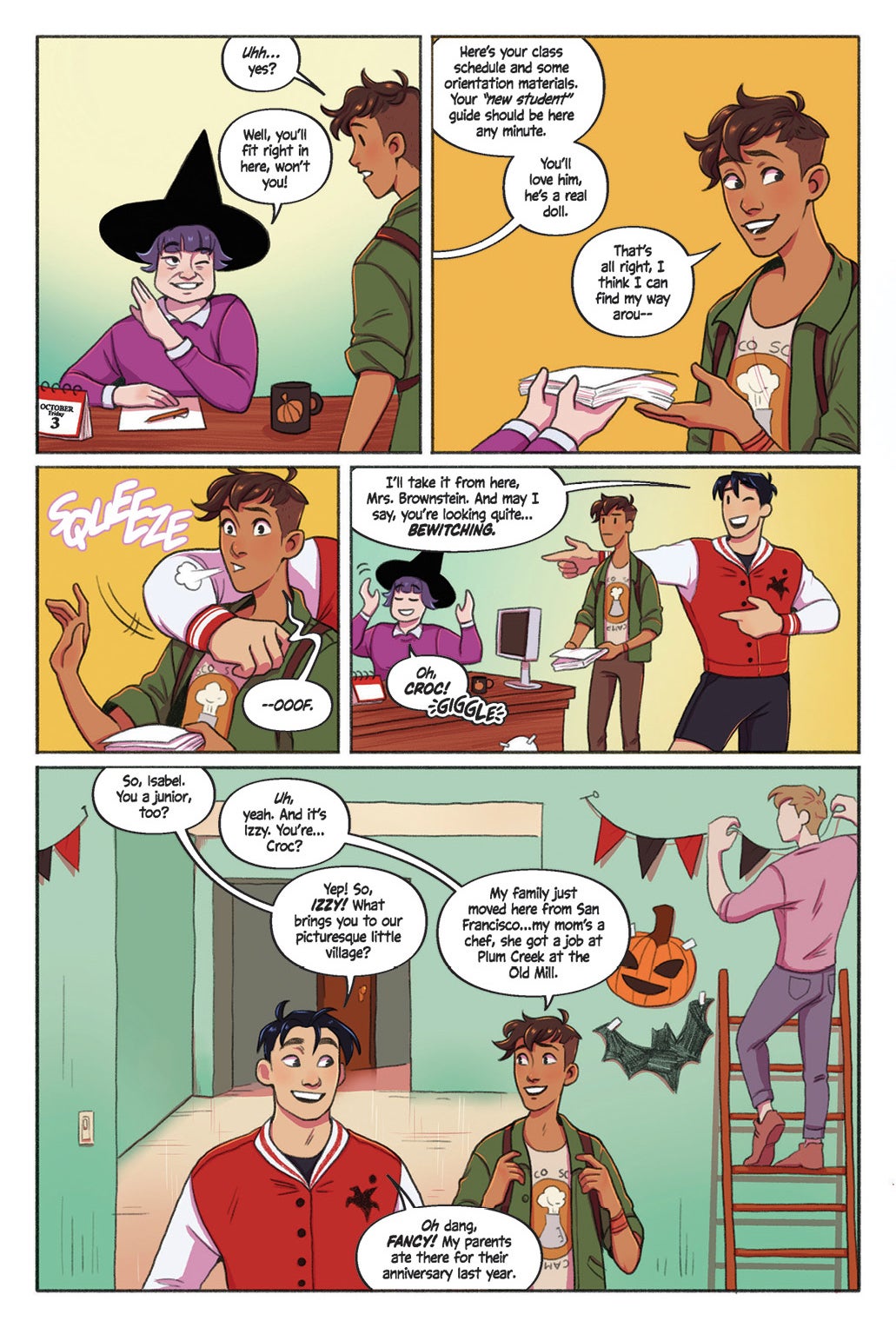
Boyer-White: [Turns to Shannon.] Have you ever had any encounters?
Watters: I haven't. I've had spooky situations where I've had a feeling, but we talk about this a lot. My mom is very open regarding whatever that plane is, and she has many ghost story encounters, but I never have. My energy, whatever I am or however I move through the world, does not encourage that experience. Not because of cynicism or lack of interest but just because of how my brain works; they're not interested in me.
Boyer-White: I have the same answer, even down to my mom experiences things, sees and feels them. My mom would always talk about her ghost when I was growing up. Yes, I said that correctly, "her ghost." She had a ghost since she was a little girl who followed and watched over her, but I never saw, felt, or witnessed the ghost. Nothing.
But I have a ghost-adjacent story. One night, when I was a teenager, my mom and sister were in the garage trying to move a heavy piece of furniture, like a big dresser or credenza, and get it loaded onto a dolly. I was in our family kitchen, and there was a wooden hutch right outside where we had all these terracotta figurines common in Mexican folk art of women with like lilies in baskets on their backs. Suddenly, I heard a shatter, looked over, and saw that a couple of figurines had fallen off the hutch, and I was like, "Oh, that's weird, but we live in earthquake country." My heart's already a little weird, but I'm thinking nothing of it. I go over and try to sweep the pieces up. As I rose back up off my knees, I looked, and on the surface of the hutch, there were all the pieces of figurines. So they didn't fall off. They exploded.
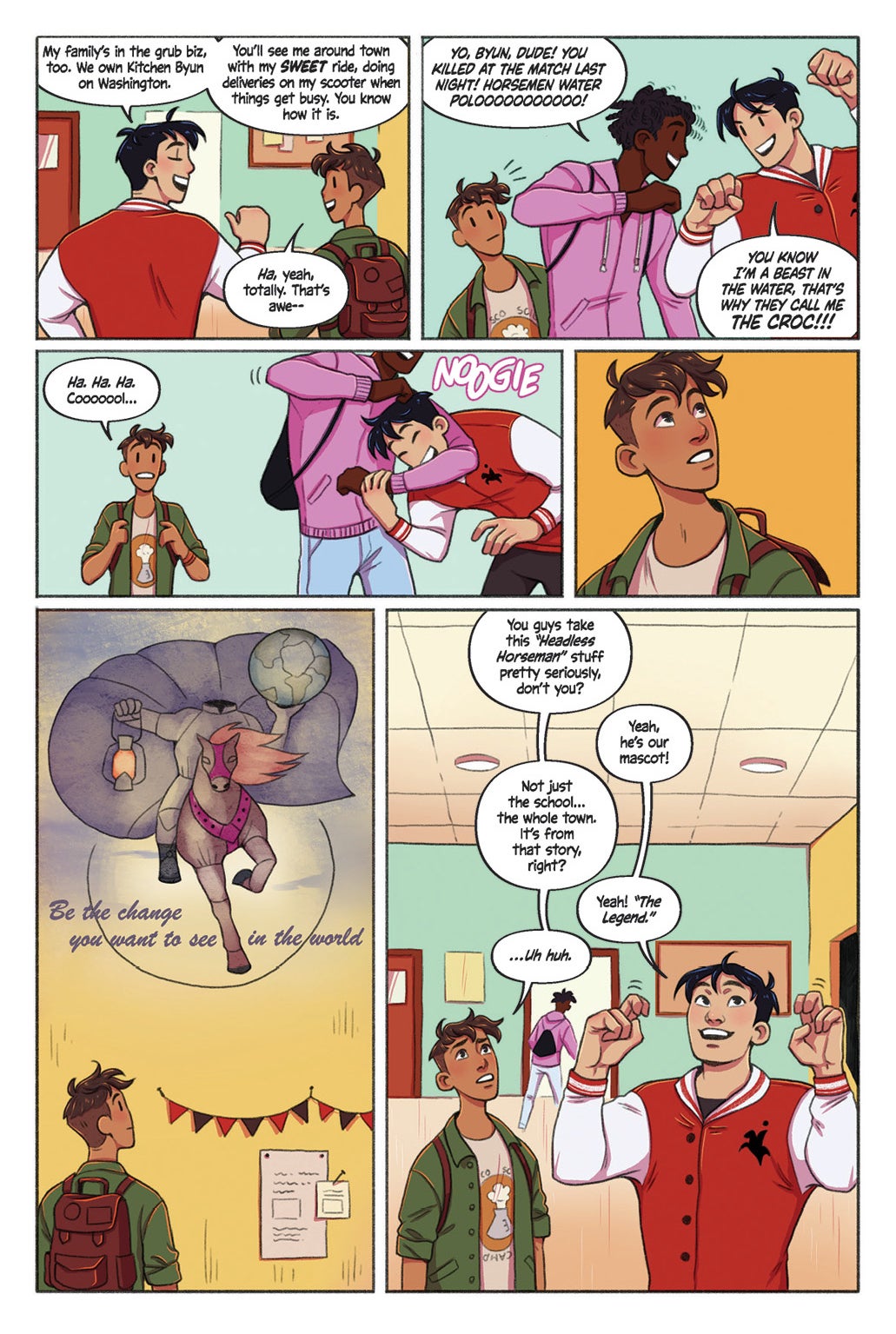
Boyer-White: They exploded on the hutch! When my mom or sister came in from the garage, I was doing the pointing and the babbling, like, "They just exploded, and I don't know what happened." And my mom's like, "Ugh. I was really frustrated trying to lift that hutch, and probably when I bore down to lift it, my ghost just popped it in frustration."
So, it was either some weird pressure change in the room that finally got to a crack in the terracotta, or her ghost squeezed the figurines…
Watters: … We'll never know.
Did the ghost have a name?
Boyer-White: I think Stevie; we finally figured out that was the name. We mostly called him 'the ghost' or 'her ghost.' We didn't call him by his name. He was always a man because that's what she saw a man in his '30s-ish clothes with a bald head. My mom said he was benevolent.
What went into the decision to set this story in the present day?
Watters: It was just fun. It was the story we wanted to tell.
Boyer-White: No disrespect to any of the other adaptations, I love them all, and I'm a huge fangirl, but they're all period. They're all set back when the actual story happened—part of the fun is bringing the ghost into the present day and seeing how contemporary characters deal with it.
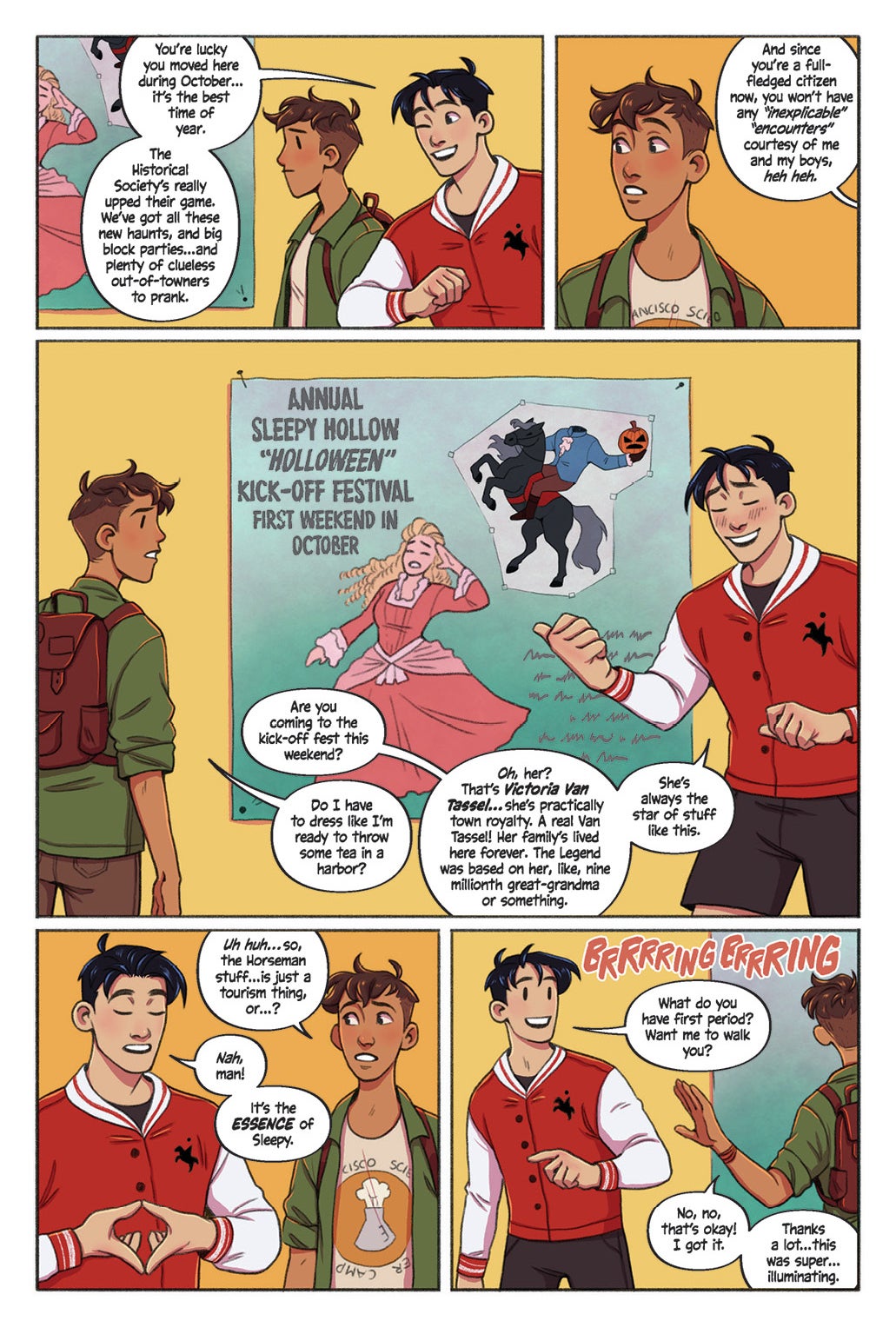
Boyer-White: It opens the storytelling up for more. Obviously, the book is queer. We tried to make the cast as diverse as possible across different groups of people. The moment you start setting stories in different historical periods, you either choose to pull a Bridgerton and be like, we're redoing a historical lens here, or you must deal with the realities many people faced [including in queerness, interjects Watters].
Suddenly, the story is not a fun romp about a ghost. You can't respectfully write about characters of color and queer characters in the past without also grappling with that stuff. We wanted to tell a story where we could feature diverse types of human lives while doing something fun and spooky. People have a right to read themselves in a story that's just fun and spooky.
Why is it essential to tell queer stories?
Boyer-White: Stories about coming out and stories about the queer experience and what it's like to be queer are incredibly important. Equally important are stories where the character's queerness gets to be a matter of their life itself that is taken for granted. We wanted to do a fun ghost story, a romantic comedy ghost story where the characters just happen to be queer - the way that characters have just been straight since the dawn of time…
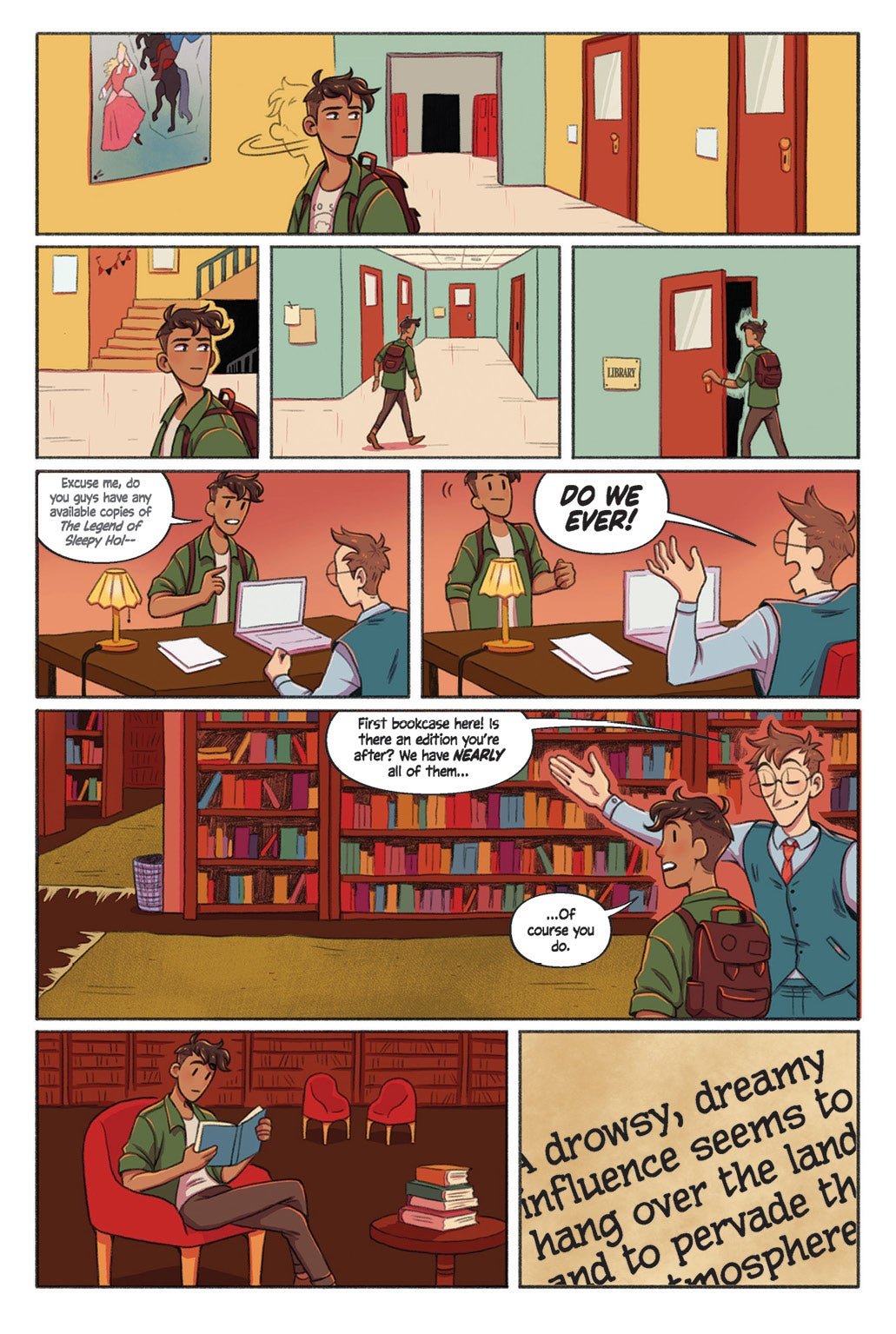
Boyer-White: … And my straight sister, who saw the cover for the first time, texted and said, "Izzy's a stone, cold Fox." We were like, "Thanks. We'll pass the compliments on to our cover artist."
Watters: Yes, but it's like the queer gaze, in that case, is very important. Like, this is a romantic comedy for queer kids and teens.
What draws you to writing YA?
Watters: I think it's an interesting time because feelings are really big. I'm somebody who came out in my mid-twenties, which felt very late in life at the time. But now, at 37, I'm like, "Come out at any time; it's never too late." But at the time, I had a lot of deep sadness about not getting to experience my teenhood as an out, open queer teenager. I process that a lot through my work. I recently said this on a San Diego Comic Con panel, but it feels true. I think I sort of engage in the act of being a queer teen … It feels like I'm reaching back through time in my life, and they're love letters and letters of apology to my past self, like "I see you. I'm sorry that this wasn't there for you. I'm sorry I didn't know, but I know now. I'm going to take care of you. I'm going to take care of kids like you." It's like reaching back to myself, so I find it healing. I find it very special, and it's just a fun time to explore.
Boyer-White: I'm going to let her answer stand. That's lovely. This was also my first time writing for a YA audience, so I don't have the breadth of philosophy yet that she does. I'm a fiction writer by training, previous work, and publication. Before this book, my publication history was mostly short stories for adults. I wasn't writing stories that a publisher would market to teens or kids in a marketing sense. This was new for me in that it was my first time writing for a YA audience and my first time working in graphic storytelling,
Branden, how was the transition from writing short stories and prose to a graphic novel? Was it natural?
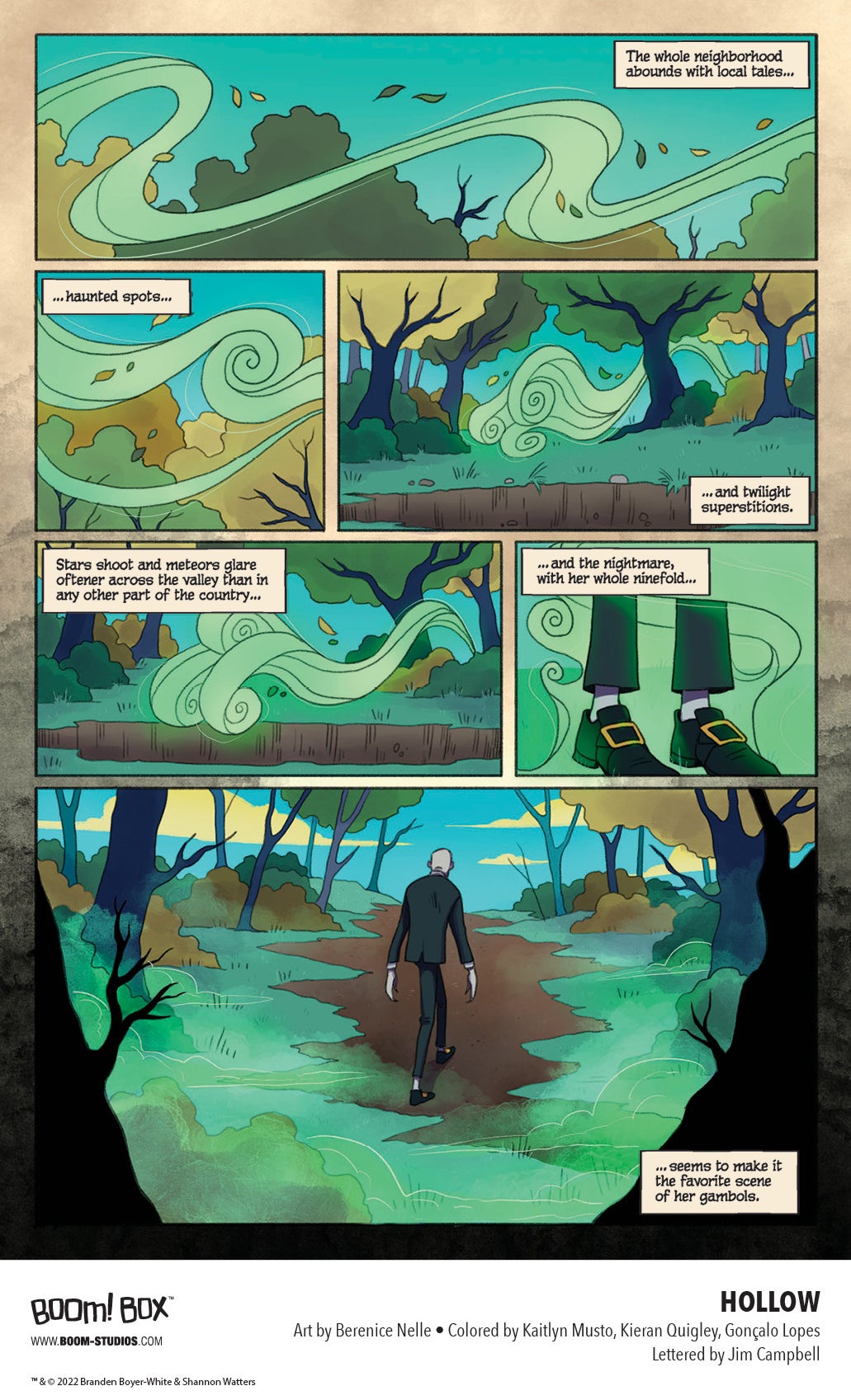
Boyer-White: Not to pat myself on the back, but I did take to it naturally. [Watters agrees.] A friend of mine, who is a very talented poet, I was talking with her about this, and she said, "You know, that doesn't surprise me because your fiction is very visual." There's a lot of expository storytelling that you can get done with a fast visual instead of needing to lay out; here's how these characters move from this end of the room to that end of the room.
I love writing fiction. I won't stop. However, I felt much lighter doing the [graphic novel] than when I'm isolated in my fiction writing.
Watters: Collaboration is so much fun, and collaboration with an artist is so much fun. I often say that a comic script is a conversation with your artist. I heard Brian K. Vaughn say a comic script is a love letter to your artist. I thought that was beautiful. If you are somebody who loves your artist and respects them, it's what makes it such an incredible process. And we loved our artist and respected our artist so much. It's funny, sweet, beautiful, and spooky when it needs to be, and the locations are dead on, even though they were working from Germany, from photos. So that was great.
What was the inspiration behind Vicki's style?
Watters: Vicky is in a state of trying to escape being defined. We wanted to make that clear. She wants to escape being pigeonholed because she feels like she has been pigeonholed her whole life—and an easy visual shorthand for that is a stylistic transition. But also, we just chose stuff we thought was cool…
Boyer-White: … or funny. Like, what would make a funny visual? And so, we would write to our artist, and like our script would be like, "She walks into the classroom, and she is total 'Like a Virgin' Madonna, like look at that." Or, we were like, today, she's goth, and today, she's wearing a Top Gun-style flight suit with aviator sunglasses. A ton of the answers to how did you guys, or why did you guys, for the book are because it was fun. We were just having a lot of fun.
Watters: We wrote this during the depths of the pandemic. It was a magical experience to work on this piece of creative, collaborative work together during this time that we were trapped in the house together. And it was lovely. We worked well together, and it ended up being a beautiful time.
Was this the first time you collaborated on a project?
Together: It's the first time we collaborated on a piece of writing, but not on a piece of art. We are champion competitive table-scapers at the Los Angeles County Fair. We make massive, insane table-scaping displays each year, but that's all physical crafting, like sculpting, foam, paper, and painting. We've won two of the three times we've entered so far. We did table-scaping before writing this book, and it had the same energy. We are very supportive of each other and have many of the same ideas, but we also bring different things to the table. Also, we're very good at respectfully heading the other off at the pass when one of us is sinking the ship for refusing to kill a darling. So, yeah, it worked out well.
Was any aspect of adapting the 'Legend of Sleepy Hollow' particularly challenging?
Watters: Because it wasn't a straight adaptation, we were free to choose the parts of the story we felt were most relevant to us. Something that I was surprised we didn't use more was the bridge thing. We used the ghost can't cross this bridge once or twice, but I was surprised we didn't use it more because it's so iconic. But it wasn't relevant to the story we wanted to tell beyond those two instances.
Boyer-White: In terms of like challenges with adaptation, there were indeed challenges in the story-making itself. But yeah, it was pretty. One of the reasons it gets adapted so much is that it's such a cool, fun, sexy thing to adapt. It really lends itself to it, like you want to see versions of it repeatedly, and every version does its own evocative things with it. We mostly like to let our imaginations run wild while staying true to the thing's soul.
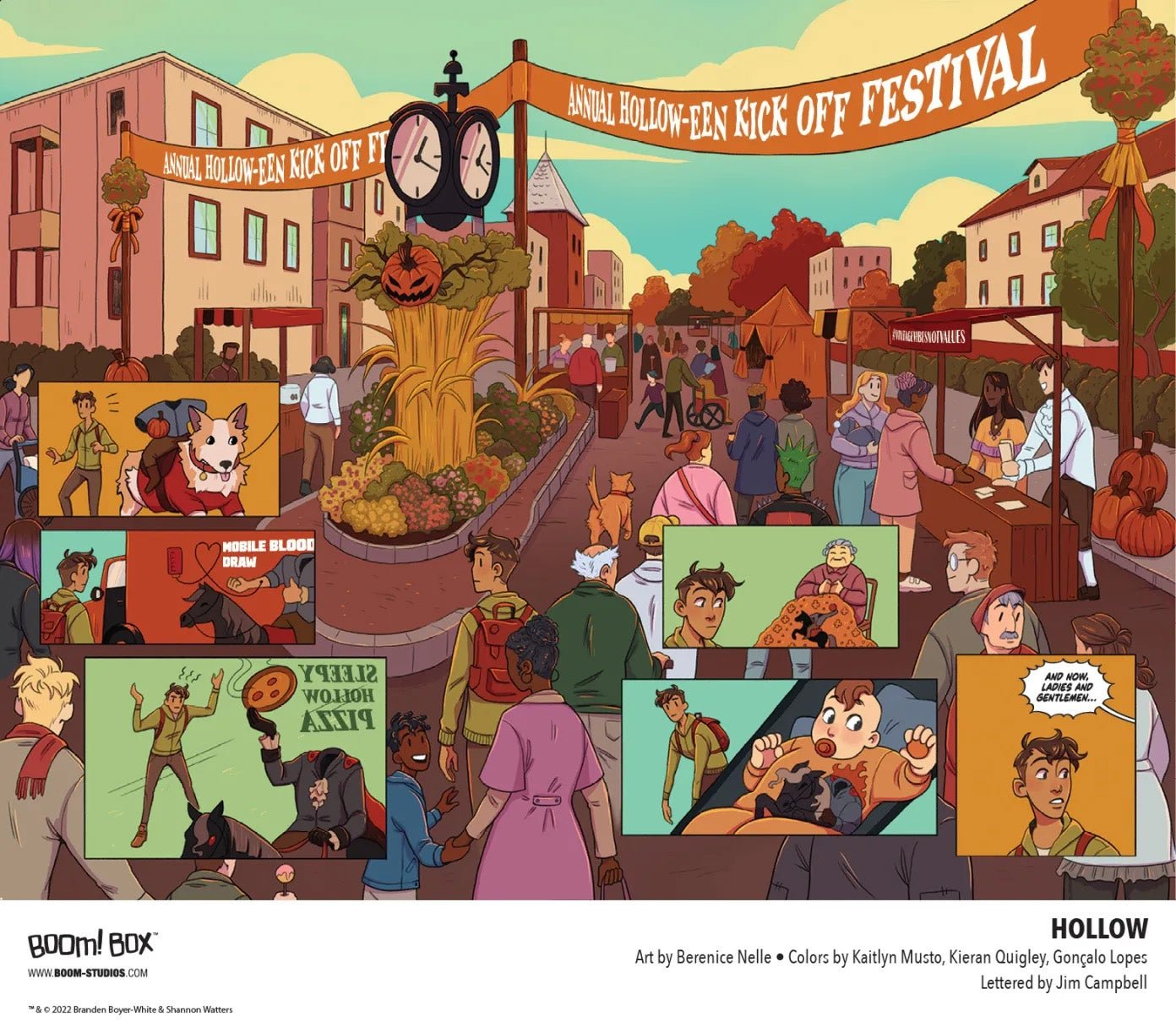
What is your favorite multimillion-dollar corporate food incentive?
Boyer-White: It's not even a fun, cool Halloween-y one. Do you remember how McDonald's used to do the little plastic Barbie dolls every year? Those glow so brightly in my memory. They were the holy grail of Happy Meal toys.
Watters: Pizza Hut's Land Before Time puppets from 1986-1987-ish. They smelled great. I was 100% obsessed. Obsessed.
My wife likes those.
Boyer-White: I feel like there's one in every relationship who's like dinosaurs.
Watters: Yeah. I love dinosaurs!
I loved each of your dedications to your grandma.
Watters: My grandma loved to read comics. She loved comics, loved me. She loved my writing. She was one of the most creative, cool, incredible people I've ever had in my life. She would read every issue of Lumberjanes, call me, and tell me what she thought of it. I loved her, and I miss her a lot.
Boyer-White: My grandma (well, my entire family) encouraged me to read. I was a bookworm, and they all supported it, but my grandma bought me adult-length novels, ghost story books, and light horror books.
Do you have plans for more Izzy, Vicki, and Croc, the main characters of Hollow?
Together: Stay tuned. That is in the process right now. Take a chance on this book if you love spooky romantic comedy adventures. We would appreciate it deeply. We've got ideas, though. We have plans and big-time ideas.
Follow Popverse for upcoming event coverage and news
Find out how we conduct our review by reading our review policy
Let Popverse be your tour guide through the wilderness of pop culture
Sign in and let us help you find your new favorite thing.
















Comments
Want to join the discussion? Please activate your account first.
Visit Reedpop ID if you need to resend the confirmation email.